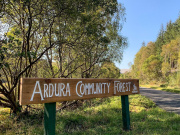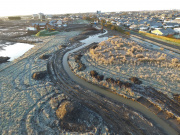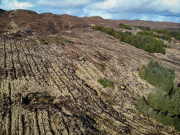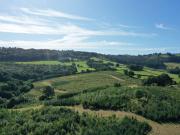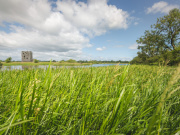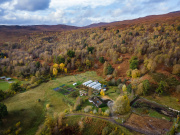Public body sparks discussion on Scotland’s changing landscape
A new paper launched by Scotland’s leading land reform body hopes to stimulate discussion on the ways communities can benefit from land use change and investment for Scotland’s net zero ambition.
The Scottish Land Commission’s ‘Community benefits from investment in natural capital’ discussion paper not only considers thinking on how local communities can benefit from changes in Scotland’s land, but showcases how investment in natural capital enhancement, restoration, and creation projects can deliver a multitude of public, private, and community benefits.
The paper ̶ aiming to help shape the emerging field of community benefits ̶ draws together the Commission’s current thinking on some of the key questions about community benefits from investment in natural capital, and highlights the need for major investment in Scotland’s land to fulfil these on a local level while meeting climate demands. With an estimated £15 billion-£27 billion of investment required in Scotland to reach net zero by 2045, the Commission has proposed a definition of community benefits in this context and a set of expectations about how community benefits should be identified and delivered.
The discussion paper has been released with a series of case studies, showcasing examples of existing land ownership, use, and management where investment has been crucial in transforming land to act in the interest of local communities.
Hamish Trench, Chief Executive at the Scottish Land Commission, said: “With Scotland attracting significant investment in natural capital it is important to ensure practical ways in which communities benefit. This discussion paper is intended to help shape practice that delivers on the principles the Scottish Government has set out for responsible investment.
“Community benefit should be a key consideration for land owners, investors and project developers. While there are many ways this can be approached, the paper proposes some basic principles.”
Community benefits are packages delivering maximum value to local communities on a negotiated basis for long term use. These benefit packages arise from investment in natural capital enhancement, creation and restoration projects.
One of six supporting case studies demonstrates that land managed with community benefit can provide key financial return for surrounding communities.
Trees for Life – which owns and manages Dundreggan Estate in Glenmoriston – underwent a series of environmental projects, one of which saw the planting of a native woodland that sold its carbon units generated to corporate buyers for offsetting. The money raised through this particular project is invested back into local community initiatives and groups.
Hamish added: “The Trees for Life case study is just one example where communities have seen tangible benefits unlocked from the land around them.
“Scotland’s land plays a pivotal role in our everyday lives and so it is essential that communities are able to influence and benefit from natural capital projects, land decisions and land use.
“We hope this paper will stimulate the discussion on practical ways to help ensure that Scotland is maximising its land opportunities.”
The Scottish Land Commission provides advice and recommendations for reforms to law and policy as well as leadership for change in culture and practice, working to create a Scotland where everybody can benefit from the ownership and use of the nation’s land and buildings.
The Scottish Land Commission’s ‘Community benefits from investment in natural capital’ discussion paper can be found here.
Responses to this paper are welcome and can be sent by email to goodpractice@landcommission.gov.scot before 20 March 2023.
